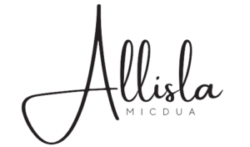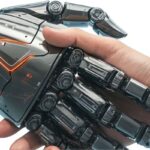In the rapidly evolving landscape of technology, autonomous workflows have emerged as a transformative force across various industries. These workflows leverage advanced algorithms and artificial intelligence to automate complex processes, thereby enhancing efficiency and reducing human error. By enabling systems to operate independently, organizations can streamline operations, improve productivity, and allocate resources more effectively.
The shift towards automation is not merely a trend; it represents a fundamental change in how businesses approach their operations, allowing them to focus on strategic initiatives rather than mundane tasks. As organizations increasingly adopt autonomous workflows, the need for robust security measures becomes paramount. The integration of intelligent agents into these workflows introduces both opportunities and challenges.
While these agents can significantly enhance operational capabilities, they also present new vulnerabilities that must be addressed. Understanding the intricacies of autonomous workflows and the role of agents within them is essential for organizations aiming to harness their full potential while safeguarding against potential threats.
Key Takeaways
- Autonomous workflows are becoming increasingly important in modern business operations.
- Agents play a crucial role in autonomous workflows, carrying out tasks and making decisions.
- Threat modeling is essential for understanding potential risks in autonomous workflows.
- Identifying and addressing potential threats is critical for the security of autonomous workflows.
- Implementing guardrails for agents is a key practice for securing autonomous workflows.
Understanding the Role of Agents in Autonomous Workflows
Agents play a pivotal role in the functioning of autonomous workflows, acting as the driving force behind automation. These intelligent entities are designed to perform specific tasks, make decisions based on data inputs, and interact with other systems without human intervention. By utilizing machine learning and artificial intelligence, agents can analyze vast amounts of information, identify patterns, and execute actions that align with predefined objectives.
This capability allows organizations to achieve unprecedented levels of efficiency and accuracy in their operations. Moreover, agents can adapt to changing conditions and learn from their experiences, further enhancing their effectiveness over time. For instance, in a manufacturing setting, an agent might monitor production lines, detect anomalies, and adjust processes in real-time to optimize output.
However, this autonomy also raises concerns regarding accountability and oversight. As agents operate independently, it becomes crucial for organizations to establish clear guidelines and frameworks that govern their actions, ensuring that they align with organizational goals and ethical standards.
The Importance of Threat Modeling in Autonomous Workflows

Threat modeling is a critical component of developing secure autonomous workflows. It involves identifying potential vulnerabilities within the system and assessing the risks associated with those vulnerabilities. By systematically analyzing the architecture of autonomous workflows, organizations can pinpoint areas where threats may arise and develop strategies to mitigate those risks.
This proactive approach not only enhances security but also fosters a culture of awareness regarding potential threats among stakeholders. In the context of autonomous workflows, threat modeling must consider various factors, including the types of data being processed, the interactions between agents, and the external environment in which the system operates. For example, an organization may need to evaluate how an agent interacts with third-party services or how it handles sensitive information.
By understanding these dynamics, organizations can implement targeted security measures that address specific vulnerabilities while ensuring that the overall workflow remains efficient and effective.
Identifying Potential Threats to Autonomous Workflows
Identifying potential threats to autonomous workflows requires a comprehensive understanding of both the technology involved and the broader threat landscape. Cybersecurity threats can manifest in various forms, including data breaches, unauthorized access, and malicious attacks aimed at disrupting operations. Additionally, internal threats such as misconfigured systems or human error can also pose significant risks.
Organizations must adopt a holistic approach to threat identification that encompasses both external and internal factors. One common threat to autonomous workflows is the risk of adversarial attacks on the algorithms that drive agent decision-making. Malicious actors may attempt to manipulate input data or exploit weaknesses in the algorithms themselves to achieve desired outcomes.
Furthermore, as agents increasingly rely on interconnected systems and cloud services, the potential for supply chain vulnerabilities grows. Organizations must remain vigilant in monitoring these threats and continuously assess their security posture to adapt to an ever-changing landscape.
Implementing Guardrails for Agents in Autonomous Workflows
To ensure that agents operate within acceptable parameters, organizations must implement guardrails that define the boundaries of their actions. These guardrails serve as a framework for decision-making, helping to prevent agents from taking actions that could lead to unintended consequences or security breaches. By establishing clear guidelines for agent behavior, organizations can maintain control over their autonomous workflows while still reaping the benefits of automation.
Guardrails can take various forms, including predefined rules for decision-making, constraints on data access, and mechanisms for human oversight. For instance, an organization may implement a policy that requires human approval for certain high-stakes decisions made by an agent. Additionally, organizations should regularly review and update these guardrails to reflect changes in business objectives or emerging threats.
By fostering a culture of accountability and transparency around agent actions, organizations can enhance trust in their autonomous workflows.
Best Practices for Securing Autonomous Workflows

Securing autonomous workflows requires a multifaceted approach that encompasses technology, processes, and people. Organizations should adopt best practices that prioritize security at every stage of workflow development and implementation. One key practice is conducting regular security assessments to identify vulnerabilities and ensure compliance with industry standards.
This proactive approach allows organizations to stay ahead of potential threats and make informed decisions about risk management. Another best practice involves implementing robust access controls to limit who can interact with autonomous workflows and the data they process. By employing role-based access controls and multi-factor authentication, organizations can reduce the risk of unauthorized access and protect sensitive information.
Additionally, continuous monitoring of agent activities is essential for detecting anomalies or suspicious behavior in real-time. By leveraging advanced analytics and machine learning techniques, organizations can enhance their ability to respond swiftly to potential threats.
The Role of Encryption in Protecting Autonomous Workflows
Encryption plays a vital role in safeguarding the integrity and confidentiality of data within autonomous workflows. As agents process sensitive information, it is imperative that organizations employ encryption techniques to protect data both at rest and in transit. This ensures that even if unauthorized individuals gain access to the data, they cannot interpret or misuse it without the appropriate decryption keys.
Moreover, encryption serves as a critical component of compliance with regulatory requirements related to data protection. Many industries are subject to stringent regulations governing how sensitive information must be handled and secured. By implementing strong encryption practices, organizations not only enhance their security posture but also demonstrate their commitment to protecting customer data and maintaining trust with stakeholders.
Monitoring and Auditing Autonomous Workflows for Threats
Continuous monitoring and auditing are essential components of maintaining secure autonomous workflows. Organizations must establish mechanisms for tracking agent activities and assessing compliance with established guardrails and security policies. By implementing logging and monitoring solutions, organizations can gain visibility into how agents operate within workflows and identify any deviations from expected behavior.
Auditing processes should be conducted regularly to evaluate the effectiveness of security measures and identify areas for improvement. This may involve reviewing access logs, analyzing agent decision-making patterns, and assessing compliance with regulatory requirements. By fostering a culture of accountability through monitoring and auditing practices, organizations can enhance their ability to detect potential threats early and respond effectively.
Training Agents to Recognize and Respond to Threats in Autonomous Workflows
Training agents to recognize and respond to threats is a critical aspect of securing autonomous workflows. Organizations should invest in developing sophisticated training programs that enable agents to identify potential risks based on historical data and real-time inputs. By leveraging machine learning techniques, agents can learn from past incidents and improve their ability to detect anomalies or suspicious behavior.
Additionally, organizations should implement feedback loops that allow agents to refine their responses based on outcomes from previous interactions. For example, if an agent successfully identifies a security threat and takes appropriate action, this experience should be used to enhance its future decision-making capabilities. By continuously improving agent training programs, organizations can bolster their defenses against emerging threats while maximizing the effectiveness of their autonomous workflows.
Collaborating with Security Experts to Enhance Guardrails for Agents
Collaboration with security experts is essential for organizations seeking to enhance guardrails for agents in autonomous workflows. Engaging with cybersecurity professionals can provide valuable insights into emerging threats and best practices for securing automated systems. These experts can assist organizations in developing comprehensive security frameworks that address specific vulnerabilities associated with autonomous workflows.
Furthermore, collaboration can facilitate knowledge sharing among industry peers facing similar challenges. By participating in forums or working groups focused on cybersecurity in automation, organizations can stay informed about the latest trends and innovations in threat mitigation strategies. This collective approach not only strengthens individual organizations but also contributes to a more secure ecosystem for autonomous workflows across industries.
The Future of Guardrails for Agents in Autonomous Workflows
As technology continues to advance at an unprecedented pace, the future of guardrails for agents in autonomous workflows will likely evolve significantly. Organizations will need to adapt their security measures to keep pace with emerging threats while harnessing the full potential of automation. This may involve integrating advanced technologies such as artificial intelligence-driven security solutions that can proactively identify vulnerabilities before they are exploited.
Moreover, as regulatory landscapes shift in response to growing concerns about data privacy and security, organizations will need to ensure that their guardrails align with evolving compliance requirements. The future will likely see an increased emphasis on transparency and accountability in automated decision-making processes, necessitating robust frameworks that govern agent behavior while maintaining operational efficiency. In conclusion, as autonomous workflows become increasingly integral to organizational operations, understanding the complexities surrounding them is essential for ensuring security and efficiency.
By implementing comprehensive strategies that encompass threat modeling, guardrails for agents, encryption practices, continuous monitoring, training programs, collaboration with experts, and adaptability to future challenges, organizations can navigate this dynamic landscape effectively while safeguarding their assets against potential threats.
FAQs
What is threat modeling for autonomous workflows?
Threat modeling for autonomous workflows is the process of identifying and analyzing potential security threats and vulnerabilities in the context of automated processes and workflows. This involves assessing the potential risks and impact of these threats on the system and developing strategies to mitigate them.
Why is threat modeling important for autonomous workflows?
Threat modeling is important for autonomous workflows because it helps to proactively identify and address potential security risks and vulnerabilities in the system. By understanding the potential threats, organizations can implement appropriate security measures to protect their autonomous workflows from potential attacks and breaches.
What are some common security threats to autonomous workflows?
Common security threats to autonomous workflows include unauthorized access, data breaches, denial of service attacks, malware and ransomware, insider threats, and system vulnerabilities. These threats can compromise the integrity, confidentiality, and availability of the autonomous workflows and the data they handle.
How can organizations guard against security threats in autonomous workflows?
Organizations can guard against security threats in autonomous workflows by implementing security best practices such as access control, encryption, authentication, and monitoring. Additionally, organizations can conduct regular threat modeling exercises to identify and address potential security risks and vulnerabilities in their autonomous workflows.
What are some best practices for threat modeling autonomous workflows?
Best practices for threat modeling autonomous workflows include involving cross-functional teams in the process, identifying and prioritizing potential threats, assessing the impact of these threats, and developing mitigation strategies. It is also important to continuously review and update the threat model as the autonomous workflows evolve.



